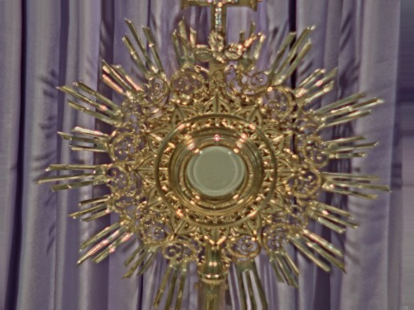Saints
Blessed Teresa Bracco
1924-1944
Teresa Bracco was born on 24 February 1924 in the village of Santa Giulia (Diocese of Acqui), Italy, to Giacomo Bracco and Anna Pera, two humble and devoutly Catholic farmers. From an early age she showed signs of great piety, particularly a love of the Eucharist and a tender devotion to the Virgin Mary. After a long day of tiring work, her father would lead the family in reciting the Rosary. Teresa learned to pray by following her parents’ example.
The formation she received at home was strengthened by the catechesis given by an exceptional parish priest, Fr Natale Olivieri, who gave her many religious books to read but, most importantly, inspired her by his holy life.
At school, Teresa’s teachers marveled at her exemplary conduct. As a young girl and throughout her adolescence she was often found in church with her eyes fixed on the tabernacle, immobile and almost ecstatic in the presence of the Blessed Sacrament. She spared no sacrifice to nourish her love for Christ in the Eucharist, rising early in the morning and walking over a kilometre to attend Mass and receive Holy Communion. She spent the rest of her day in work and prayer, fingering her rosary when her tasks allowed it.
One of her most striking virtues, however, was her modesty in speech and dress. She instinctively fled from trivial conversations. One witness said: “She was different from the other girls”. At the age of nine, she saw a picture of the then Ven. Dominic Savio in the Bollettino Salesiano, with the caption: “Death rather than sin”. She exclaimed: “That goes for me!”. She cut out the picture, pasted it on a card and hung it over her bed It remained her favorite object of devotion for the rest of her life.
In the autumn of 1943 guerrilla warfare intensified in the Acqui region. The mountains and woods afforded many hiding places for partisans and draft resisters. On 24 July 1944 a fierce clash occurred between partisan forces and German troops on the road between Cairo Montenotte and Cortemilia. The next day the Germans returned to collect their dead: they burned farms, looted homes and terrorized the people.
They extended the round-up to the entire area and on 28 August reached Santa Giulia, which they thought was as a stronghold of the partisans, even though the latter had moved elsewhere. They seized three girls, one of whom was Teresa. A soldier, perhaps a non-commissioned officer, took her to a deserted place in the woods. Indomitable, Teresa tried to run from the thicket in the hope of getting help from a nearby family. But the ruffian grabbed her and threw her to the ground. She resisted the savage aggression with all her might, but the enraged soldier throttled her until she choked. He shot her twice with his revolver and to vent his rage, crushed part of her skull with his boot. Teresa had fulfilled her intention: “I would rather be killed than give in”.

- Blessed Isidore Bakanja
- Blessed Marguerite Bays
- Blessed Teresa Bracco
- Blessed Marcel Callo
- St. Margaret Clitherow
- Blessed Luigi Beltrame Quattrocchi & Blessed Maria Corsini
- St. Fabiola
- Blessed Antonia Mesina
- Blessed Pier Giorgio Frassati
- Blessed Nikolaus Gross
- St. Helena
- St. Isidore the Farmer
- Blessed Bartholomew Longo
- St. Charles Lwanga and Companions
- St. Anne Lyne
- Blessed Ceferino Gimenez Malla
- Blessed Gianna Beretta Molla
- Blessed Elizabeth Canori Mora
- St. Manuel Moralez
- St. Thomas More
- St. Joseph Moscati
- St. Nonna
- St. Salvador Lara Puente
- St. David Roldán-Lara
- Blessed Carlos Manuel Cecilio Rodriguez Santiago
- Venerable Matthew Talbot
- Blessed Laura Vicuna
- Blessed Artemide Zatti